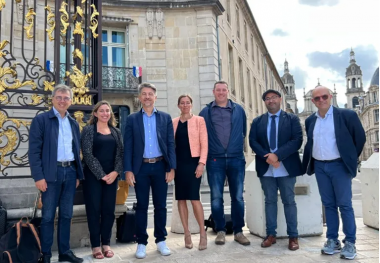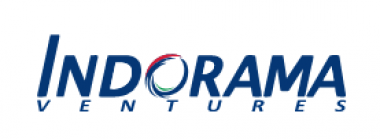VIATT 2024 as the response to Vietnam's developing textile sector
Vietnam is the subject of increasing investment across an array of industries, with its textile sector going from strength to strength in a short space of time. To give key players from across the textile spectrum an opportunity to make their presence felt in this market, the Vietnam International Trade Fair for Apparel, Textiles and Textile Technologies (VIATT) will make its debut from 28 February – 1 March 2024. Taking place at the Saigon Exhibition and Convention Center (SECC), the new fair will cover three main product sectors, namely apparel fabrics, yarns and fibres, and garments; home textiles; as well as technical textiles and nonwovens, textile processing, and printing technology.
In line with the industry’s anticipation, the country was identified as the ideal location for ASEAN’s new comprehensive textile platform for several key reasons. Vietnam’s pro-business policies, strategic geographical location, abundant labour force, and favourable trade agreements have contributed to its rise as a global textile manufacturing hub. Agreements such as the Regional Comprehensive Economic Partnership (RCEP); the Indo-Pacific Economic Framework for Prosperity (IPEF); and 15 free trade agreements (FTAs) covering over 60 countries and regions, will further enable participants from across the value chain to conduct cross-border business after connecting at next year’s show. In addition, several key travel initiatives that serve international players have been implemented, including the country’s APEC Business Travel Card programme[1], availability of e-visas to all nationalities, and visa-free travel for select countries[2].
Exhibitors from multiple textile sub-sectors converge in February
In Vietnam’s home textile segment, rising urbanisation, emerging young consumers, and higher disposable incomes are interrelated factors driving growth[3]. Globally, three of the top trends include recycling; utilising green fibres; and the increasing use of technical fabrics for enhanced comfort and health. At the fair, confirmed home textiles exhibitors include Hanyang Eco Tex, Hohmann GmbH, Phuong Nam Feather, and SIGMA, set to showcase their most up-to-date products, covering bedding, upholstery fabrics, curtain, and sun protection.
Utilised for automobiles, civil aviation, construction, health care, and more, Vietnam's exports of technical textiles reached USD 676.6 million for the first nine months of 2022, up 17.1% compared to the same period in 2021[4]. This in turn bodes well for the country’s import prospects of quality machinery and equipment. Hoping to cater to domestic demand at VIATT 2024, international suppliers in this category include Julai, SIGMA, and Skwentex.
Meanwhile, apparel-related products make up the lion’s share of the country’s textile exports – according to Vietnam Textile & Apparel Association (VITAS), in 2022 these numbered USD 29.1 billion. From Ho Chi Minh to Hanoi, numerous international fashion brands have a manufacturing presence, including Adidas, H&M, Lacoste, Lululemon, Nike, The North Face, Uniqlo, and many more. At next year’s fair, exhibitors such as Avery Dennison, Lenzing, Stylem Takisada-Osaka, and Texwinca, will aim to draw the attention of apparel brands and a wide range of other domestic and international buyers.
The Vietnam International Trade Fair for Apparel, Textiles and Textile Technologies (VIATT) is organised by Messe Frankfurt (HK) Ltd and the Vietnam Trade Promotion Agency (VIETRADE), covering the entire textile industry value chain.
[1] ‘Everything You Need to Know About Traveling to Vietnam with an APEC Business Travel Card’, April 2023, Vietnam Briefing, https://www.vietnam-briefing.com/news/apec-business-travel-card-vietnam.html/ (Retrieved: November 2023)
[2] ‘Vietnam Introduces E-Visa for All Nationalities from August 15, 2023’, August 2023, Vietnam Briefing, https://www.vietnam-briefing.com/news/vietnam-introduces-e-visa-for-all-nationalities-from-august-15-2023.html/ (Retrieved: November 2023)
[3] ‘Vietnam Home Textile Market Size & Share Analysis’, 2023, Mordor Intelligence, https://shorturl.at/wQVWZ (Retrieved: November 2023)
[4] ‘Vietnam's technical fabric exports continue to be positive’, October 2022, Web Portal of Supporting Industry of Vietnam, https://shorturl.at/lmnvX (Retrieved: November 2023)
Messe Frankfurt (HK) Ltd














